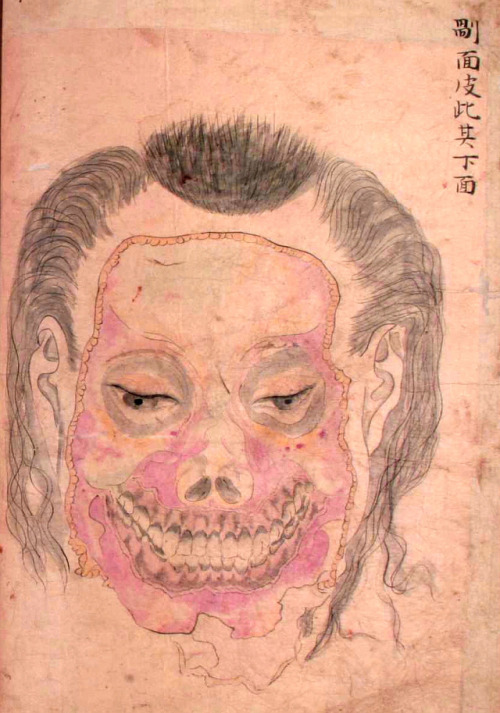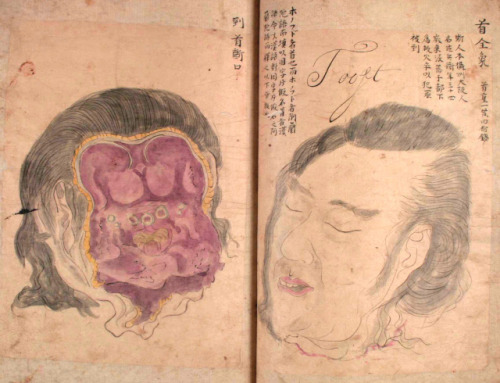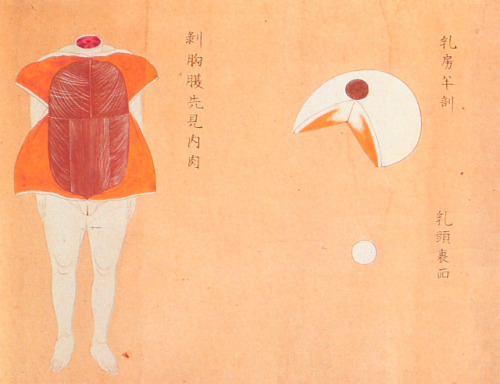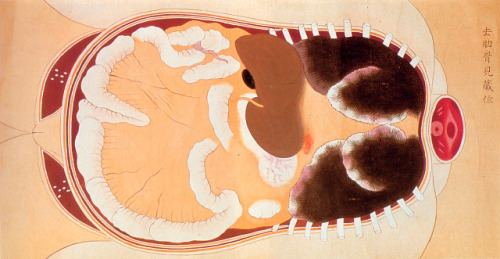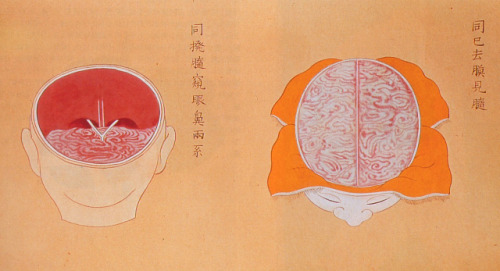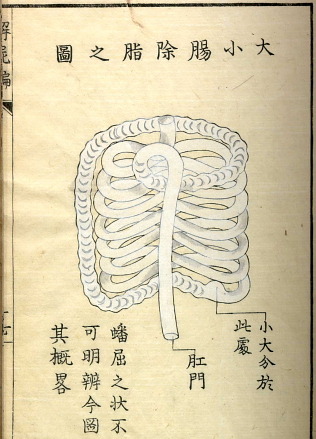#human dissection
Edo-period Japan.
Dissection, 1783. This illustration is from a book by Genshun Koishi on the dissection of a 40-year-old male criminal executed in Kyōto in 1783.
Post link
Seyakuin Kainan Taizōzu (circa 1798)
These illustrations are from the book entitled Seyakuin Kainan Taizōzu, which documents the dissection of a 34-year-old criminal executed in 1798. The dissection team included the physicians Kanzen Mikumo, Ranshū Yoshimura, and Genshun Koishi.
Post link
These anatomical illustrations are from the book Kanshin Biyō, by Bunken Kagami.
In the last picture, a sheet of transparent paper showing the outline of the body is placed over the anatomical illustration.
Post link
Edo-period, Japan.
These illustrations are from a book by Bunken Kagami (1755-1819) that documents the dissection of a body belonging to a female criminal executed in 1800.
Post link
Female dissection. Edo-Period Japan.
Conducted on the body of a 34-year-old female executed criminal. The document, entitled Gyokusai Zōzu, was published in 1774.
Post link
Kaishihen (Dissection Notes), 1772
Japan’s fifth human dissection – and the first to examine the human brain – was documented in a 1772 book by Shinnin Kawaguchi, entitled Kaishihen (Dissection Notes). The dissection was performed in 1770 on two cadavers and a head received from an execution ground in Kyōto.






Japan’s second human dissection, 1758 // First human female dissection, 1759
In 1758, a student of Tōyō Yamawaki’s named Kōan Kuriyama performed Japan’s second human dissection (see illustration on left). The following year, Kuriyama produced a written record of Japan’s first dissection of a human female (see illustration on right). In addition to providing Japan with its first real peek at the female anatomy, this dissection was the first in which the carving was performed by a doctor. In previous dissections, the cutting work was done by hired assistants due to taboos associated with handling human remains.

Human skeleton, 1732
These illustrations – created in 1732 for an article published in 1741 by an ophthalmologist in Kyōto named Toshuku Negoro – show the skeletal remains of two criminals that had been burned at the stake.

Human skeleton, 1732
This document is thought to have inspired physician Tōyō Yamawaki to conduct Japan’s first recorded human dissection.


Japan’s first recorded human dissection, 1754
These illustrations are from a 1754 edition of a book entitled Zōzu, which documented the first human dissection in Japan, performed by Tōyō Yamawaki in 1750. Although human dissection had previously been prohibited in Japan, authorities granted Yamawaki permission to cut up the body of an executed criminal in the name of science. The actual carving was done by a hired assistant, as it was still considered taboo for certain classes of people to handle human remains.


